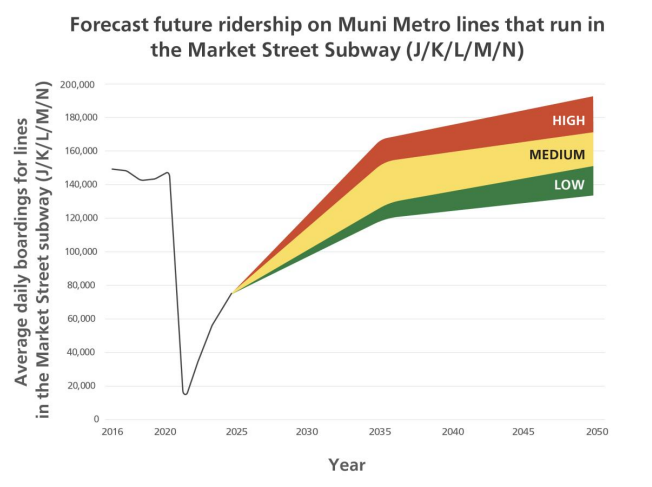How did the Study take shape and what’s next?
San Francisco’s long-range transit vision, the ConnectSF Transit Strategy, prioritized the need to modernize and expand the capacity of Muni Metro as one of four critical investment areas. The Muni Metro Capacity Study was launched to define this investment program.
We started by forecasting future ridership and identifying a list of potential capacity-enhancing and modernizing strategies. We assessed their technical feasibility and their potential benefits and impacts. We eliminated some strategies that were either infeasible and/or had limited benefits and/or significant costs. Then we combined the remaining strategies to identify a set that would address our future ridership needs in the next 10-15 years.
Along the way we collected community feedback, including getting feedback from a Community Working Group, other interested members of the public, and via multilingual Muni Metro rider focus groups.
We will present a final report to the SFMTA Board before the end of 2025. After the Study is done, any projects the SFMTA chooses to move forward would undergo detailed planning and outreach with affected communities before projects are considered for approval.
How did the Study team forecast future ridership?
About 100,000 people ride Muni Metro each day. That makes us the fourth busiest light-rail system in the nation. Ridership has been growing each year since the pandemic. The Study considers a wide range of future ridership levels. The low end assumes ridership does not fully recover from pre-pandemic levels by 2050. The high end assumes future ridership is about 30% higher than pre-pandemic levels by 2050.
These forecasts recognize that the future may unfold in different ways. The forecast methodology uses two factors:
- Growth in population and jobs
- The ratio of ridership to population and jobs near Muni Metro stops, or “ridership ratio,”
We made a few different possible assumptions for each of these factors. The result is three ridership “bands,” or ranges of what we consider Low, Medium, and High future ridership.

Read more details about this in the Muni Metro Capacity Study Draft Recommendations Appendix.